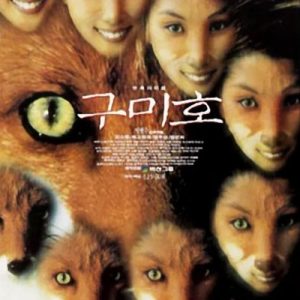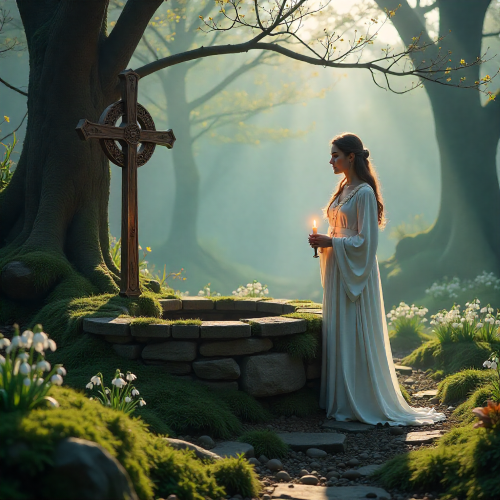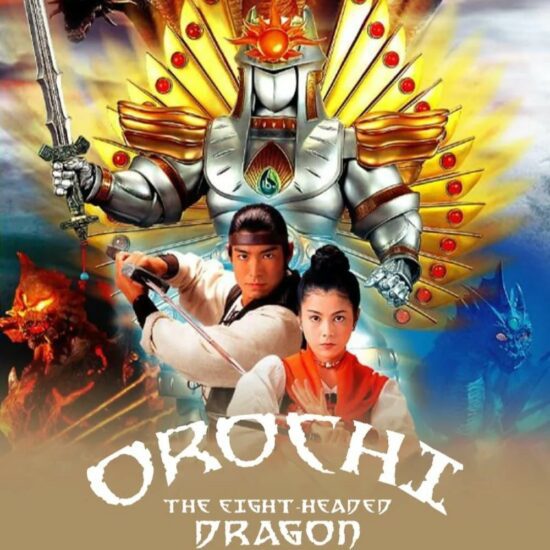Gumiho (1994)
| Description | |
|---|---|
| Country of Origin | South Korea |
| Language | Korean |
| Genre | Horror |
| Cast | Ko So-young, Jung Woo-sung |
| Directed by | Park Heon-su |

The 1994 Korean movie Gumiho remains one of the earliest cinematic attempts to bring Korea’s iconic nine-tailed fox myth to the screen, and its interpretation still feels significant today. At its core, the film attempts to humanize the Gumiho myth while preserving its eerie, unpredictable nature, presenting a creature that is both deeply misunderstood and undeniably dangerous. Rather than leaning purely on horror, the movie explores emotional depth, identity, desire, and the clash between the supernatural and the human world, allowing the Gumiho legend to be experienced through a dramatic and mythologically rooted lens.
What makes this film particularly compelling for mythology enthusiasts is its faithfulness to the foundational traits of the Gumiho. In Korean folklore, a Gumiho is a fox that has lived for a thousand years and acquired the power to shapeshift into a beautiful woman. This transformation is often associated with seduction, trickery, or a desire to become fully human, themes the film embraces wholeheartedly. The movie presents the Gumiho not simply as a monster but as a complex supernatural being trapped between instinct and aspiration. The duality of her existence is depicted with an emotional nuance that remains quite rare for early 90s Korean cinema, especially within the fantasy genre.
The film also draws heavily from traditional tales where the Gumiho seeks a human heart or liver, a motif that symbolizes the creature’s internal struggle between predatory nature and a longing for love or humanity. In the Gumiho movie, this mythological tension is reinterpreted in dramatic form, emphasizing the moral and emotional consequences of living as an immortal entity bound by ancient instincts. The balance between sympathy and dread is carefully maintained, making the audience question whether the Gumiho is driven more by survival or by longing. This ambiguity mirrors the essence of the original folklore, where the fox’s motives are never entirely clear.
Cinematically, the film uses practical effects and atmospheric settings to reinforce the mythic aura surrounding the protagonist. While modern audiences may find the visuals dated, the aesthetics still succeed in conveying an old-world supernatural presence that matches the myth’s centuries-old origins. The forest settings, nocturnal scenes, and symbolic use of the moon invoke the traditional element of nature spirits and mystical entities that dominated Korea’s mythological landscape. The decision to situate the narrative in more isolated environments strengthens the feeling that the Gumiho belongs to a liminal world—connected to humanity but never fully part of it.
Additionally, the movie explores how human characters react to the idea of a Gumiho, mirroring societal fears embedded in folklore. Historically, the Gumiho was regarded as a deceptive, dangerous being who threatened social and moral stability, especially through the symbolism of feminine power and shapeshifting. The film reflects these anxieties while also challenging them, portraying the Gumiho as capable of genuine affection and tragedy. This shift highlights the cultural evolution in how Korean audiences perceive their mythic creatures—not just as warnings or terrors but as figures capable of emotional resonance.
The thematic emphasis on transformation is especially powerful. The Gumiho myth has always been tied to the desire for change—whether to become human, to gain power, or to survive. The film takes this concept and turns it into its emotional backbone, presenting the Gumiho’s journey as one of yearning and conflict. Her interactions with humans reveal the inherent difficulty of reconciling who she is with who she wants to be. This tension captures the heart of Korean folklore, where supernatural beings often mirror human fears and desires.
Overall, the 1994 Gumiho movie remains a valuable and engaging adaptation of one of Korea’s most captivating mythological figures. While it belongs to an earlier era of filmmaking, the narrative continues to resonate because it understands that the power of the Gumiho myth lies not just in fear but in emotional depth, moral ambiguity, and cultural symbolism. For mythology lovers and fans of folklore-based cinema, revisiting this film offers a rare and thoughtful portrayal of the legendary nine-tailed fox long before modern K-dramas and films brought the creature back into popular focus. As an exploration of myth and identity, Gumiho still stands as an important contribution to Korea’s cinematic interpretation of its folklore.






